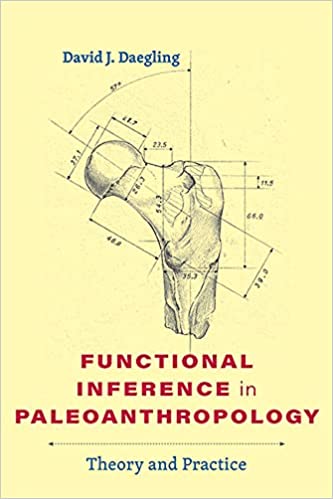Functional Inference in Paleoanthropology: Theory and Practice
by David J Daegling

This is a difficult but nevertheless extremely interesting book. It is written, I think, for academics, but interested amateurs (like I did) will certainly find it stimulating – a mixture of palaeoanthropology and the philosophy of science.
As the blurb on the cover states:
“It is common for two functional anatomists to examine the exact same fossil material, yet argue over its evolutionary significance. How can this be?”
In short, the book answers this by being less about the conclusions that palaeoanthropologists have reached on the fascinating subject of how our ancestors evolved the physical characteristics they did. Rather, it is about the (meta-)theories these scientists have used to construct and test their hypothesises. That is, the book offers both a critique of these and offers a new way to investigate human evolution using the fossil record.
‘Functional inference in palaeoanthropology’ refers to the process of extrapolating the functional or adaptive significance of anatomical features (or behaviours, to the extent you can do that from fossils) in extinct hominin species based on the evidence that is currently available. That is, it involves examining the morphological characteristics of the fossil remains–the preserved skeletal structures, dental features and other anatomical elements – and trying to work out their possible/probable functions in the context of those species’ palaeoenvironments and behaviour. It also involves archaeological evidence and other such factors as comparisons to living analogues (for instance, modern mammals, and in particular, modern apes and monkeys).
For example, studying the shape and structure of fossil hominin limb bones can provide insights into how they walked. And comparisons with modern primates and other animals can suggest whether a species mostly walked on two legs or used both walking and climbing up trees. Or, dental analysis, such as tooth size, shape, and wear patterns, can indicate diet, including whether a species primarily consumed plants or meat.
David Daegling explains that traditional palaeoanthropology has interpreted hominin fossil morphology firstly by considering the ecological challenges facing hominins, and then drawing adaptive inferences based on the idea that skeletal morphology is largely a reflection of palaeoecology. The problem is that, between the structuralist and functionalist traditions, differing (and often, potentially irresolvable) views can evolve. So, in the context of human evolution, the book discusses the disjunctions between theoretical principles of comparative morphology and methodological practice.
In his conclusion, Daegling suggests that researchers can resolve these problems of interpreting the fossil record by focusing on the biology and development of the bones themselves – such as measurable responses to deformations, stresses and damage. In this way, he makes the case that an intelligible science of functional morphology in the fossil record is impossible without the inclusion of this mechanobiological perspective.
The examples he uses to illustrate the issues include the long-standing debates on the emergence of bipedality and the dietary shifts that facilitated the emergence of hominins. For example, he examines how bone adapts over the lifespan of individuals, what environmental factors influence its quality, and how developmental constraints limit the skeleton’s adaptive potential over evolutionary time.
In this latter respect, I think I would have preferred more examples to illustrate the points he makes, and book tends comes alive when he does that. Notwithstanding this minor quibble, this is a great book if you want to be challenged about how scientists carry on their research in this fascinating part of the natural sciences.
David J Daegling is associate professor of anthropology at the University of Florida, and is a biological anthropologist specialising in the study of primate anatomy and biomechanics.
Functional Inference in Paleoanthropology: Theory and Practice by David J Daegling, Johns Hopkins University Press, Baltimore (January 2022) 280 pages (hardcover and paperback), ISBN: 978-1421442945